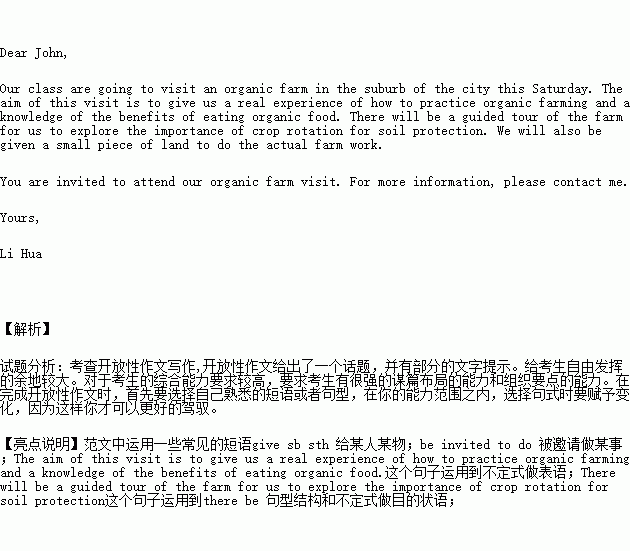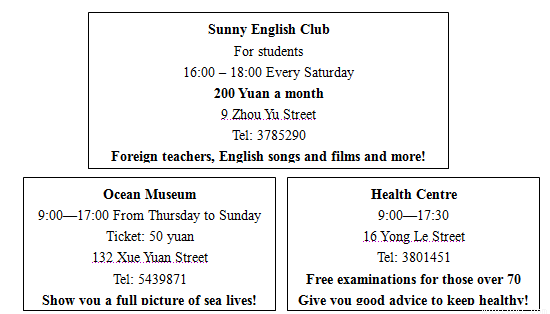题目内容
书面表达
假设你是李华。本周六你班将组织参观位于你市郊区(suburb)的某有机农场。请你用英语给你们的外籍老师约翰(John)写一封邮件邀请他参加你们的活动。内容包括:
1. 活动目的:让同学们亲身体验有机农业的耕种方式,了解吃有机食品的益处;
2. 活动项目:①专人引导参观,探究作物轮作(crop rotation)对土壤保护的重要性;
②农场将划出一块地让同学们体验农活。
注意:1. 词数100左右;
2. 可以适当增加细节,以使行文连贯。
练习册系列答案
相关题目


